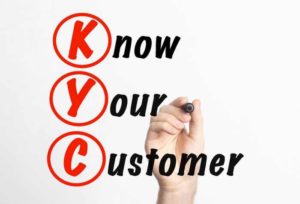5 Effective Digital Marketing Strategies for 2021 and Beyond
The competitiveness of the B2B digital marketing coupled with tons of “proven” B2B digital marketing strategies make this space confusing.
Many B2B sellers jump from one tactic to another trying to find the perfect one. But on the contrary, the most successful B2B marketers identify and implement a collection of tactics that produce a steady stream of results.
Tactics that can withstand the test of time, serving businesses in this season and beyond.
Here are five effective digital marketing strategies that do just that.

1. Search Engine Optimization
Over 67% of organic online traffic emanates from the top five appearances on search engine results pages.
Yet many B2B marketers would rather not deal with SEO, thanks to its evolving technical know-how.
Rather than overwhelm yourself with the technicalities, focus on delivering valuable content.
That’s what the search engines focus on, anyway.
To use this strategy effectively, you’ll need to understand how SEO fits within your buyer’s purchase journey.
At the beginning of their journey, most B2B buyers explore solutions for their needs. They use generic non-branded keywords.
As the results provide broad answers that pique their interest, they now switch to product-specific search terms.
In mapping the buyer’s journey, marketers can identify the keywords prospects use at the different stages and curate content that includes these keywords.
Doing so makes for higher visibility and rank.
A word of caution here.
While ranking highly is great, it should not be your end goal. Analyzing how much SEO is contributing to your pipeline is more important.
Avoid creating keyword-dense content that feeds search engines. It may take you to the top but will not translate to leads.
Balance keywords use, to provide readable and useful content.
Monitor and restructure your SEO efforts in line with evolving buyer behavior and algorithms.
2. Influencer Marketing
B2B Influencer marketing involves partnering with an influencer who promotes your products or service in front of their audience.
Influencers enhance your credibility and generate social proof needed to show that your solutions work.
This can have a large influence on your prospects’ purchase decisions.
The strategy may involve a couple of images showing the using your products or services.
Or it can be a series of videos or blog posts detailing the influencer’s experience with your products/service.
The best influencer is the one your customers and prospects are listening to, reading, and following.
Influencers who are familiar with your solutions are more believable and provide measurable results.
The success can be measured by the number of clicks, conversions, impressions, or sales they generate.
What if you can’t find a solid influencer in your team or among your associates/customers?
There are influencer marketing platforms such as Fourstarzz Media, Heepsy, or The Room on the market.
These platforms help manage your influencers and the branded content to be used in the campaigns.
Before settling for an influencer marketing platform, see how it stacks up against the following questions:
- Does the platform track campaign results?
- Does it allow you to manage your influencer’s content?
- Can you use the platform for native advertising campaigns?
3. Focus on Existing Customers
For many businesses, nurturing and bonding with a client ceases the moment they become customers.
You’ve already bagged them, so what’s the big deal?
Creating and maintaining strong bonds with existing customers is crucial to your digital marketing strategies.
These are people who are familiar with your solutions and can share useful feedback to improve them.
They are the ones who can talk about you on social media and refer other B2Bs your way.
Focusing on them is a big deal.
Here are ways you can nurture existing relationships:
- Help your customers maximize ROI. Share case studies, how-to videos, and host client-only webinars to show your customers how to leverage underutilized functions.
- Share useful industry-related news regularly. Start by segmenting your customer base according to the news that may interest them. You can then create newsletters with brief summaries of relevant stories and add links to the full articles.
- Check in consistently with your customers for feedback regarding your products/services. Make things more enjoyable by sending them a bag of high-quality coffee beforehand that you can both enjoy during the meeting.
- Act promptly on customer feedback to show them you value their opinions. Customers who feel appreciated stick around.
- Find ways to help your customers meet their marketing goals. If you know other businesses that benefit from your customer’s services, introduce them.
The returns you receive by retaining existing customers are higher than those you get by attracting new qualified leads.
4. Cold Calling
Most people shun cold calling because they don’t like being rejected repeatedly.
No one does.
This way of thinking makes cold calling one of the least competitive among other lead-generating strategies. One you can excel in if you do it right. People will listen if you use the right approach.
What is the right approach?
- Prepare: You skim through your contact list, settle on a number, and dial. That’s only going to lead to a disaster. Research your prospect, their industry, pain points, competitors, and gaps. Then make the call.
- Know your product: understand what you’re selling inside out. It’s a confidence booster and will help you easily tie your solutions to customer problems.
- Avoid using a script: not only do they make you sound robotic but also limit natural engagement with your listener. If the customer asks something off your script, you may end up sounding confused.
- Work with a call guide: write three to four key topics you would like to cover and open-ended questions. Avoid monopolizing the conversation and give the lead a chance to speak.
- Your tone matters: speak with enthusiasm but don’t be overly excited or bland. People quickly disengage from boring conversations and find overexcitement childish.
5. Pay Per Click Advertising
PPC advertising is highly effective since you’re buying targeted traffic to generate leads for nurturing and conversion.
Benefits of PPC advertising include:
- Providing website traffic throughout your campaign.
- Increasing brand awareness.
- Allowing you to define your ideal audience based on keywords or factors such as location, gender, job title, or age.
They are also quite flexible, allowing you to update or replace adverts to suit changing needs.
How do you choose the right platform for your PPC campaign?
Your buyer persona should help you identify the best platform. Once you have established which channels they use, focus your efforts there.
These channels include search engines (like Google or Bing) and social media platforms.
Let’s look at some of the popular channels.
- Google Adwords: seeing as Google dominates the online search market, Google Adwords is the Cadillac of PPC advertising. This channel boasts a large audience for high visibility, multiple advertising options (images, text, or video), and a measurable ROI.
- LinkedIn: most LinkedIn users are professionals focused on their business, making it an effective option for B2B marketing. It offers excellent targeting capabilities, high conversion rates, multiple advertising options, and solid ROI.
- Facebook: with over 2 billion monthly users, this platform offers fantastic B2B targeting B2B capabilities, offers multiple ad options, and a massive audience. It’s ideal for brand awareness and conversion campaigns.






1 comment
Priya Sharma
Absolutely great strategies! This is something very informative. To be honest, I love this article and the way you have explained the things..Thanks Again 🙂